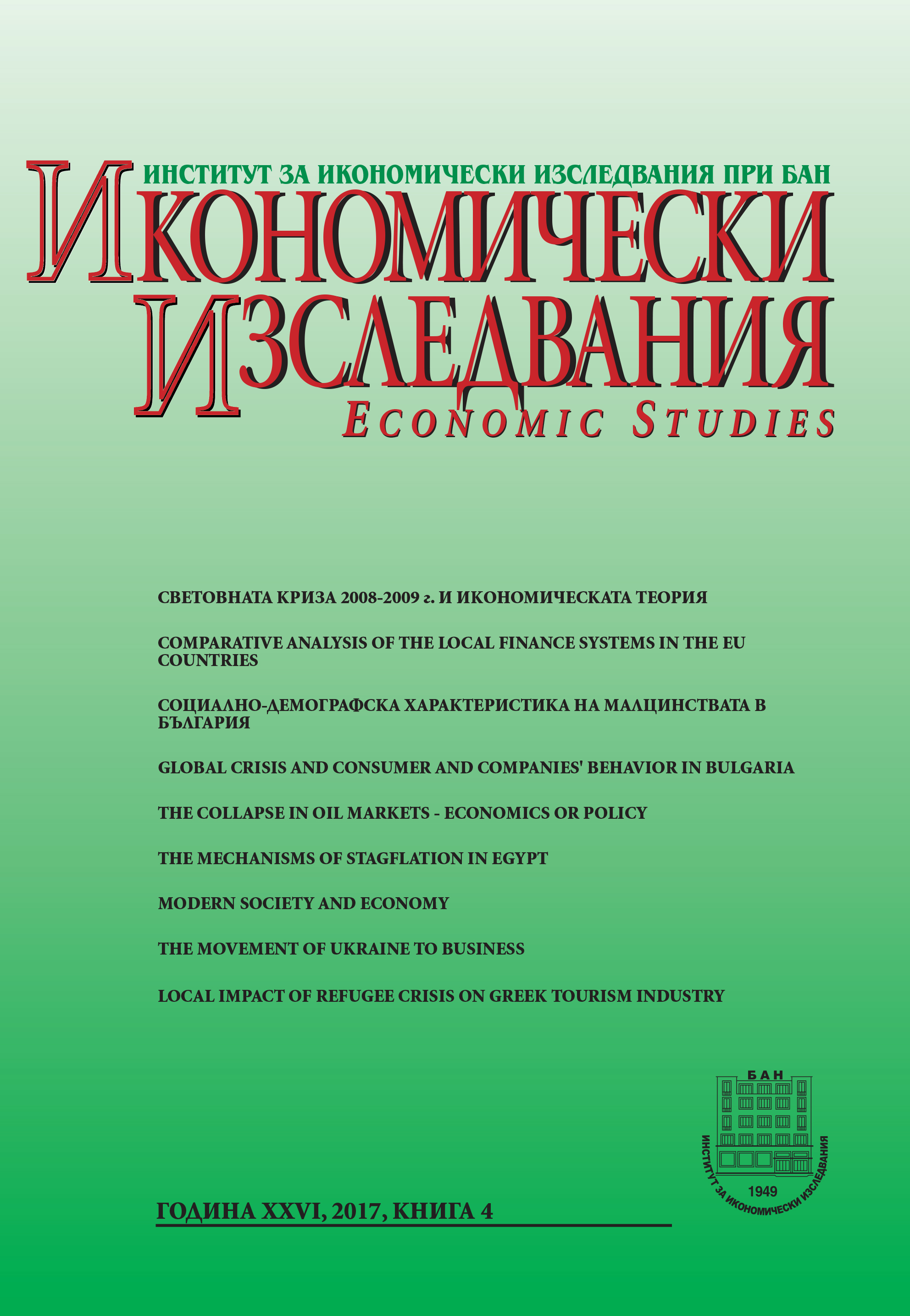The Mechanisms of Stagflation in Egypt: The Arab Spring Five Years Later
The Mechanisms of Stagflation in Egypt: The Arab Spring Five Years Later
Author(s): Ibrahim L. Awad, Ashraf Galal EidSubject(s): Economy
Published by: Институт за икономически изследвания при Българска академия на науките
Keywords: JEL: E24; E31; E60
Summary/Abstract: This study addresses the economic performance of the Egyptian economy during the periods before and after the 25th January upheaval in 2011. It analyses, in particular, the extent to which monetary and fiscal policies contribute to the phenomenon of stagflation in Egypt after 2011. The study adopts Gordon’s (1977 & 1985) model in specifying the relationship between inflation, unemployment, and real GDP growth. SVAR model has been employed to determine the factors behind stagflation in Egypt. The results suggest that macroeconomic performance does not significantly change during the periods before and after the 2011 and stagflation occurs in Egypt through the following mechanisms; (i) the existence of excess demand in the commodity market in conjunction with the existence of structural unemployment in the labour market. (ii) An existing mutual relationship between inflation and unemployment where both inflation and unemployment feed each other through the wage-price spiral and the elevation of the cost of production triggered by domestic currency depreciations. (iii) The subordination of monetary policy to fiscal policy which is in line with the fiscal dominance hypothesis and crowding out effect. (iv) Expected higher rates of inflation, through the expectations channel, shifting Phillips curve upwards.
Journal: Икономически изследвания
- Issue Year: 2017
- Issue No: 4
- Page Range: 129-145
- Page Count: 17
- Language: English

